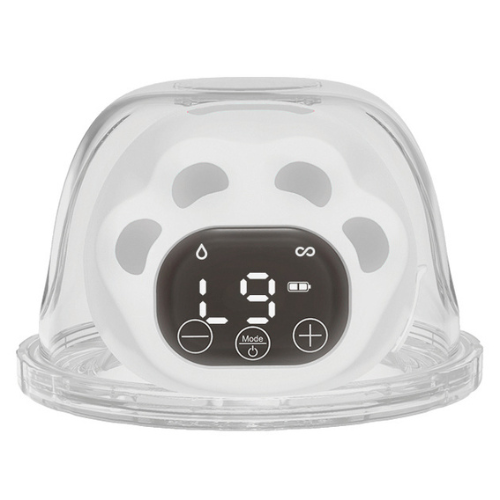FREE SHIPPING OVER $99
- Home
- Blog
- Children & Baby
- What Every New Mum Needs to Know about Breast Feeding

What Every New Mum Needs to Know about Breast Feeding
Breastfeeding: The powerful connection between mother and child, nurturing with essential nutrients. It’s an incredible journey, but not without its challenges, especially for new mums.
Breastfeeding is recommended for new mothers. It provides nourishment from human milk and has numerous benefits for both the baby and the mother. Research shows that breastfeeding offers vital nutrients and protects against common illnesses. It also reduces the risk of certain cancers and other health conditions for mothers.
Successful breastfeeding requires understanding about how it works. It’s not just about putting your baby to the breast. Reliable support from family, friends, or healthcare services is important. Proper positioning of your baby onto the breast, whether sitting or lying down, makes feeding easier and ensures comfort for both mother and child. Correct latching on ensures efficient feeding. If you have questions, seek help from your doctor or a lactation specialist.
This article will provide important information and tips for new mothers regarding breastfeeding. It will cover topics such as staying together after birth and the significance of exclusive breastfeeding for the first six months. These guidelines aim to assist new mothers in navigating the rewards and difficulties of breastfeeding effectively.
It is recommended to remain close to the newborn after delivery.
After giving birth, it is recommended to have skin-to-skin contact with your baby. This contact aids in bonding, triggers hormone release for breastfeeding, and promotes your baby’s ability to latch onto the breast. Remaining close to your newborn during these initial moments can establish a solid foundation for successful breastfeeding.
Please make sure that you have the proper position and attachment.
Proper latch and attachment are important for successful breastfeeding. Make sure your baby’s mouth is wide open and covers a good amount of the areola. The chin should touch the breast, and the baby’s lips should be turned outward. Try different breastfeeding positions to find the most comfortable one for you and your baby.
Be Patient.
Both you and your baby need to learn breastfeeding together. It takes time to get comfortable and find your rhythm. Be patient as you navigate this new experience. Seek support if you have difficulties or questions.
The feeding schedule can be modified according to the baby’s requirements.
Newborn babies have small stomachs and require frequent feeding. It is advised to breastfeed based on your baby’s cues or when they indicate hunger. Signs of hunger in a baby include lip smacking, rooting, or hand-to-mouth gestures. By responding to these hunger signs, you will provide the necessary nourishment for your baby’s growth and development.
It is recommended to have the baby sleep in the same room as the parents.
Keeping your baby close to you can have several benefits for breastfeeding. Having your baby in the same room allows for quick response to hunger cues, promotes skin-to-skin contact, establishes a sense of security and comfort, facilitates bonding, and helps you become more attuned to your baby’s needs.
It is advised to avoid using pacifiers, bottles, and introducing solid foods.
To ensure successful breastfeeding, it is recommended to avoid introducing teats, dummies (pacifiers), or complementary feeds prematurely. These can cause nipple confusion and hinder your baby’s ability to latch onto the breast effectively. During the initial weeks, prioritize exclusive breastfeeding to promote a robust milk supply and ensure your baby receives all the advantages of breastfeeding.
It is recommended to prioritize exclusive breastfeeding for the first six months when feasible.
The WHO recommends exclusive breastfeeding for six months. Breast milk has all the necessary nutrients for growth and development. It also protects against infections and lowers disease risk. After six months, complementary foods can be added while continuing to breastfeed for up to two years or longer.
Breastfeeding has many benefits for both mothers and babies. It can reduce stress, aid in post-pregnancy weight loss, and lower the risk of certain cancers for mothers. Babies who are breastfed receive important nutrients and antibodies that support their physical, cognitive, and psychological development. Exclusive breastfeeding for the first six months also helps protect babies against infections and illnesses. With the right information, support, and dedication, most new mothers can successfully breastfeed their babies.
Some common challenges and solutions for breastfeeding are…
Low Milk Supply:
The milk supply is dependent on demand, so feeding your baby frequently should help your body adjust and produce enough milk. If you’re worried about low milk supply, consider expressing milk after each feed or using donor breast milk as a supplement.
Engorgement:
Engorgement is a common experience for breastfeeding mothers, typically happening in the first few weeks after childbirth. It is characterized by swollen and firm breasts that can be uncomfortable and tender to touch. Engorgement occurs as the body adapts to producing breast milk for your baby’s feeding needs.
Breasts may feel full of milk between feedings during breastfeeding, but it should not be painful or overly uncomfortable. To prevent engorgement or reduce its severity, aim to nurse your baby frequently and stimulate milk production. Eating and drinking well will help maintain a healthy balance of fluid and address oversupply issues.
Sore Nipples
It is common for breastfeeding mothers to experience sore and sensitive nipples as a side effect. This discomfort can occur during the initial weeks of breastfeeding as the nipples adjust to the baby’s sucking. It is normal to experience soreness and sensitivity during this adjustment period.
It is important to look for cracked or damaged skin on your nipples. If pain doesn’t improve after a few weeks, ask for help from a lactating consultant or healthcare professional. They can provide tips and recommendations tailored to your needs. Discuss potential strategies to improve nursing comfort, such as trying different positions or adjusting feeding frequency.
Leaking
Breastfeeding is a natural experience for mothers. However, the body may need time to adjust. One common issue is breast leaking, which can be uncomfortable and embarrassing. Throughout the day, many women feel their breasts are heavy and full, causing milk to leak. The amount of leaking varies based on feeding sessions and milk production.
Breastfeeding can become easier over time as your body adjusts to producing the right amount of milk. To manage leaking, try using a breast pump on one breast while nursing on the other, or wear pads in your bra. This will help keep you dry and comfortable. Remember to change pads regularly and wash reusable ones with mild detergent.
Expressing and storing breast milk can be a practical solution when direct breastfeeding is not feasible. Breast pumps are widely used for expressing breast milk, while hand-expressing is also a viable alternative. If this is the method you prefer, there are several factors to take into consideration when choosing a breast pump.
- It is recommended to maintain a level of discretion and quietness.
- Portability is highly valued by many mothers in today’s times, as it offers convenience and freedom to express milk or carry a power box without being restricted to an outlet.
- Battery power is essential as it enables longer pumping sessions without the requirement of reconnection.
- Many pumps today have a small size.
- A high-quality pump will have strong suction, a reliable latch, and efficient pumping power.
- The best breast pumps typically offer multiple suction options to allow users to select the most comfortable one for them.
- When considering safety, it is advisable to select products that are free of BPA, Latex, and phthalates.
- Breast pumps are typically designed to be user-friendly and provide reliable customer support in the event of any issues.
The Welcare Nurture Wearable Electric Breast Pump.
The Welcare Nurture Wearable Electric Breast Pump is a device designed for breastfeeding mothers who need to express milk while on the go or during travel.

The Wearable Electric Breast Pump is designed to fit discreetly in a nursing bra. You can pump your breast milk anywhere and anytime with this hands-free and wireless pump. The pump is compact, portable, and lightweight, making it easy to carry. The anti-backflow protection system maintains the hygiene of the breast milk by preventing milk from flowing back into the pump motor.
Ways to provide support for breastfeeding mothers.
Partners and family members play a crucial role in supporting breastfeeding mothers. They should strive to create a calm and relaxed environment that allows the mother to feel comfortable while feeding. Offering words of encouragement and providing physical contact, such as holding hands or rubbing her back, can help the mother relax during the feeding process. It is also important for partners and family members to keep track of the baby’s diaper count throughout the day.
Partners and family members may choose to bottle feed the baby with expressed breast milk, which provides an opportunity for the mother to rest. This experience can also benefit the extended family by allowing them to feel involved and connected in the baby’s care.
Breastfeeding is a beneficial experience for both mother and baby. By following certain practices such as staying together after birth, ensuring proper positioning and attachment, being patient, feeding on demand, keeping the baby close, avoiding artificial nipples, and exclusively breastfeeding for the first six months, one can increase the likelihood of a successful breastfeeding journey. Seeking support from healthcare professionals, lactation consultants, and breastfeeding support groups can also be helpful in overcoming challenges and enjoying the rewards of breastfeeding.
Sources:
- Breastfeeding 101: Tips for new moms – Mayo Clinic Health System
- What to Expect While Breastfeeding | Nutrition | CDC
- Breastfeeding Tips: What to Know About Breastfeeding a Newborn (whattoexpect.com)
- Tips for breastfeeding success | The Royal Women’s Hospital (thewomens.org.au)
- Australia’s children, Breastfeeding and nutrition – Australian Institute of Health and Welfare (aihw.gov.au)
Tags
Leave a Comment Cancel reply
SUBSCRIBE
Subscribe to our mailing list so that you can be the first to know about new products and promotions.
© 2024. All Rights Reserved.







